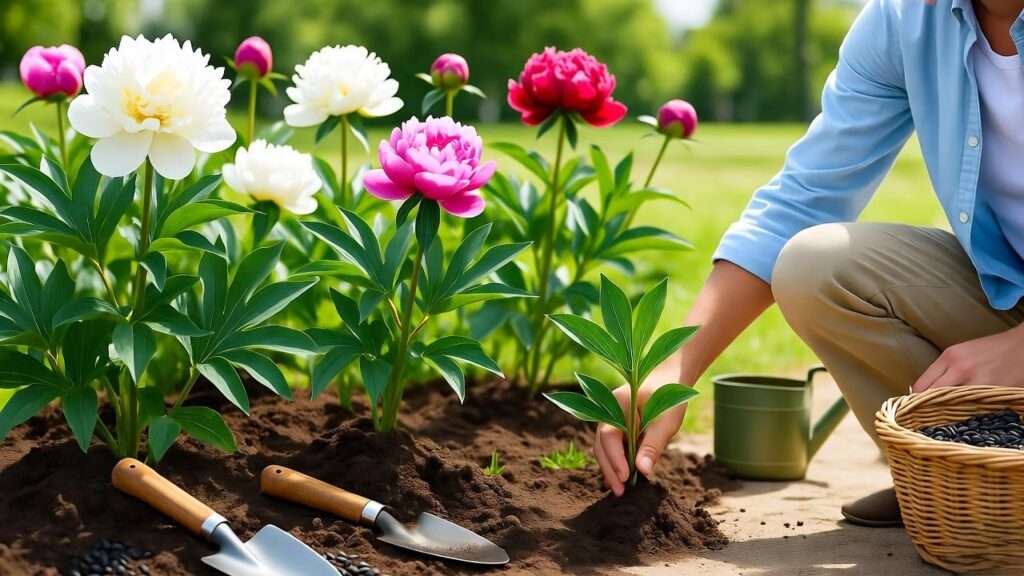Imagine your garden bursting with lush, vibrant peonies, their fragrant blooms stealing the show every spring. Planting peony seeds is your ticket to this dream, offering a rewarding journey for gardeners eager to grow these iconic flowers from scratch. While peonies are often bought as plants, starting from seed is a budget-friendly way to create a unique, flourishing garden. This comprehensive guide, crafted by a horticulturist with over a decade of experience, will walk you through every step of planting peony seeds, ensuring success even if you’re a beginner. Let’s dive into the art and science of growing peonies! 🌿
1. Understanding Peony Seeds: What Makes Them Unique 🌱
Peony seeds are unlike your average garden seeds, requiring patience and a bit of know-how to unlock their potential. Their unique biology and growth process make them a fascinating challenge for gardeners who love a rewarding project.
1.1 The Science Behind Peony Seeds
Peony seeds exhibit double dormancy, meaning they need both warm and cold periods to break their natural barriers to germination. This process mimics their natural environment, where seeds experience seasonal shifts. The outer seed coat requires warm, moist conditions to soften, followed by a cold period to trigger root growth. Understanding this is key to success, as skipping either phase can result in no germination.
Hybrid peony seeds (from cross-pollinated plants) often produce plants that differ from their parents, offering exciting surprises in color and form. Species peony seeds, like those from Paeonia officinalis, are more predictable but still require careful handling.
Expert Insight: “Double dormancy can feel daunting, but it’s nature’s way of ensuring peonies thrive in the right conditions. Patience here is your greatest asset!” – Dr. Emily Rose, Horticulturist.
1.2 Types of Peonies You Can Grow from Seed
Peonies come in two main types: herbaceous and tree peonies. Herbaceous peonies, like Paeonia lactiflora, die back to the ground each winter and are popular for their lush blooms. Tree peonies (Paeonia suffruticosa) are woody shrubs with larger, more exotic flowers. Both can be grown from seed, though tree peony seeds often take longer to germinate and mature.
Some beginner-friendly varieties for seed planting include:
- Paeonia lactiflora: Known for classic pink, white, or red blooms.
- Paeonia tenuifolia: Features delicate, fern-like foliage.
- Paeonia mlokosewitschii (Molly the Witch): Offers stunning yellow flowers.
Why It Matters: Growing from seed allows you to experiment with unique hybrids, potentially creating a one-of-a-kind peony for your garden.
2. Preparing to Plant Peony Seeds: Setting Up for Success 🌼
Before you sow a single seed, preparation is crucial. From timing to tools, here’s how to set the stage for vibrant peony growth.
2.1 When to Plant Peony Seeds
The best time to plant peony seeds is in the fall (September to October in most climates), aligning with their natural cycle. This allows seeds to begin warm stratification naturally as temperatures cool. In USDA zones 3–8, fall planting works well, but in warmer zones (9–10), you may need to simulate cold stratification using a refrigerator.
Pro Tip: Check your local frost dates to time your planting. Seeds sown too late may miss the warm stratification window.
2.2 Sourcing High-Quality Peony Seeds
Quality seeds are the foundation of success. Purchase from reputable nurseries like Peony’s Envy or Song Sparrow Farms, which offer fresh, viable seeds. Alternatively, you can harvest seeds from your own peony plants when seed pods turn brown and begin to split (usually late summer).
Common Mistake: Avoid old or improperly stored seeds, as they lose viability quickly. Always check for plump, shiny seeds, and store them in a cool, dry place until planting.
2.3 Essential Tools and Materials
To plant peony seeds, you’ll need:
- Seed trays or pots: Use deep containers to accommodate long taproots.
- Potting mix: A blend of peat moss, perlite, and compost for drainage.
- Labels and markers: To track seed varieties and planting dates.
- Soil thermometer: To monitor temperature during stratification.
- Watering can: With a fine rose for gentle watering.
Recommended Soil Mix: Combine 50% peat moss, 30% perlite, and 20% compost for a well-draining, nutrient-rich medium. Sterilize the mix in an oven at 180°F for 30 minutes to prevent fungal issues.
Expert Tip: “Invest in a soil thermometer—it’s a game-changer for ensuring the right conditions during stratification,” says veteran gardener Sarah Bloom.
3. Step-by-Step Guide to Planting Peony Seeds 🌻
Now, let’s get to the heart of the process: planting peony seeds. Follow these steps to ensure your seeds germinate and grow into healthy plants.
3.1 Step 1: Breaking Dormancy
Peony seeds require a two-phase stratification process to germinate:
- Warm Stratification (2–3 months): Place seeds in a moist medium (like damp vermiculite or peat moss) in a sealed plastic bag. Keep at 70–85°F. Check weekly for mold and ensure moisture levels are consistent.
- Cold Stratification (3 months): After warm stratification, move the bag to a refrigerator at 35–40°F. This mimics winter and triggers root growth.
Pro Tip: Label your bags with start and end dates to stay on track. A small calendar reminder can help!
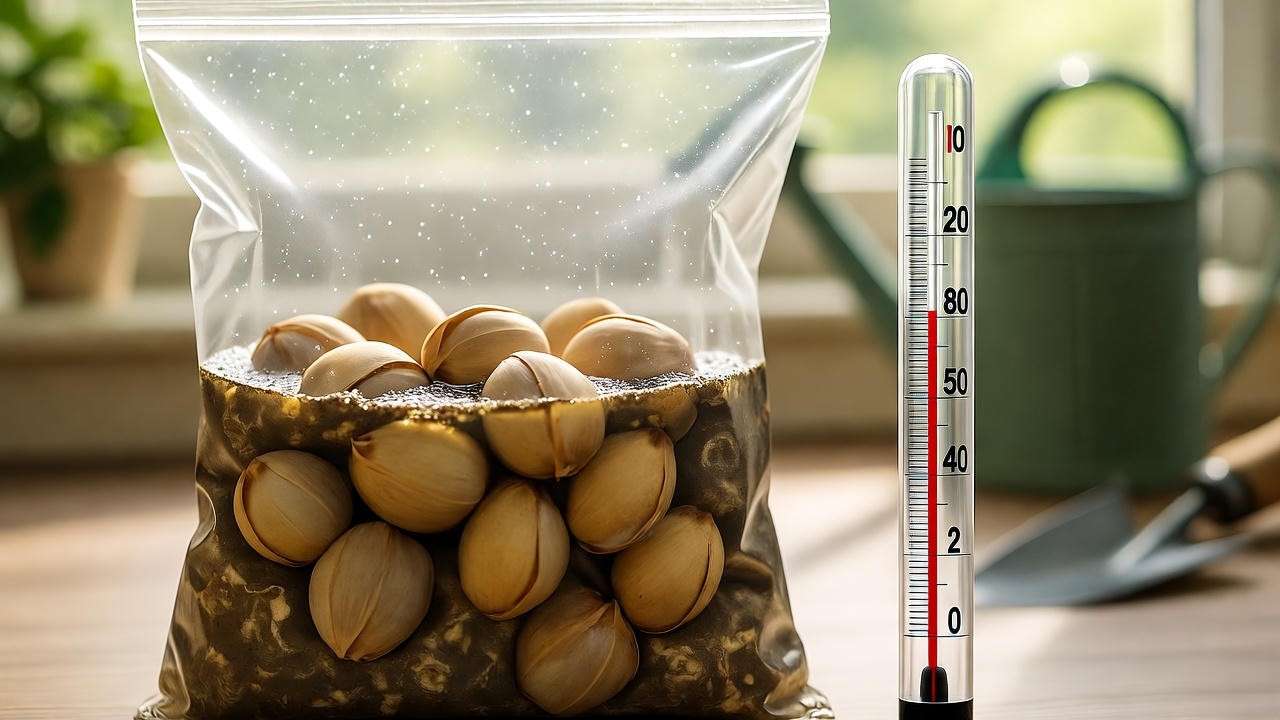
3.2 Step 2: Preparing the Planting Medium
Once stratification is complete, prepare your planting medium. Use the soil mix described above, ensuring it’s loose and well-draining. Fill seed trays or pots, leaving 1 inch of space at the top. Lightly moisten the soil before sowing.
Why Sterilize?: Fungal diseases like damping-off can kill seedlings. Sterilizing your soil mix eliminates this risk.
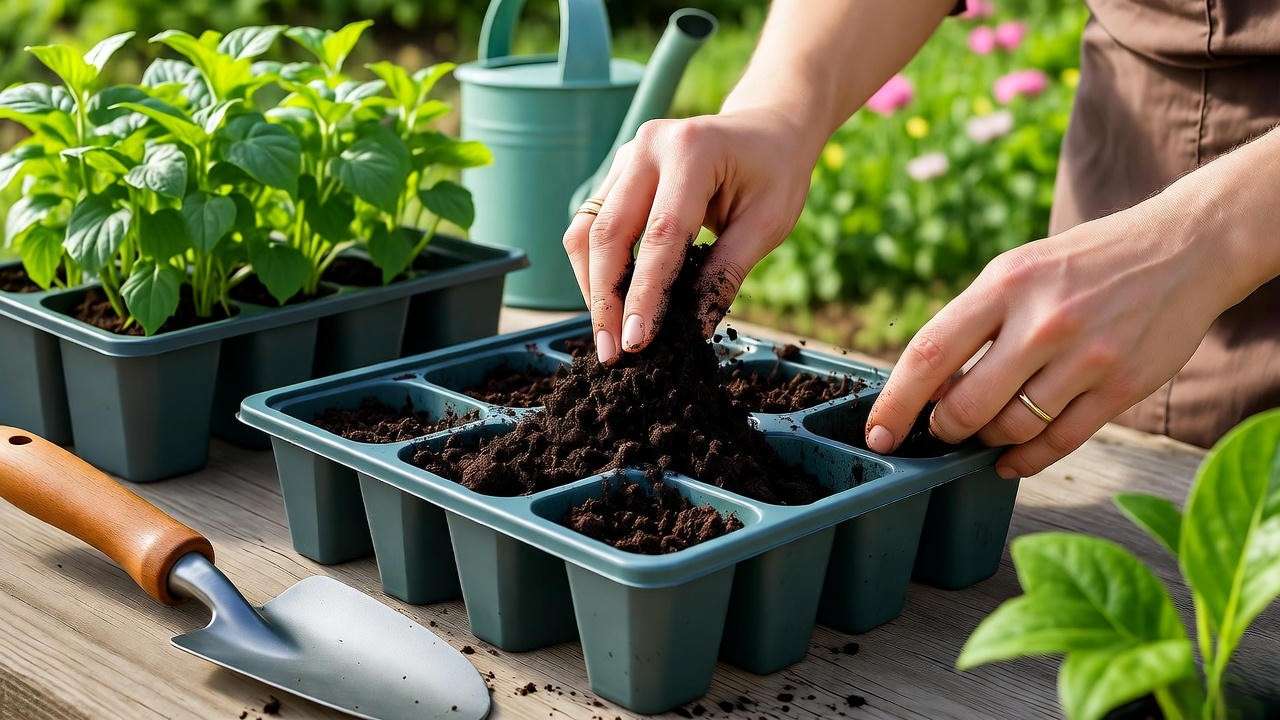
3.3 Step 3: Sowing the Seeds
Sow seeds 1 inch deep and 2 inches apart in trays or directly in a garden bed if conditions are ideal. Cover lightly with soil and water gently to settle the seeds. For indoor sowing, place trays in a bright, indirect light area. For outdoor sowing, choose a shaded spot to protect young seeds from harsh sun.
Visual Example: Imagine a tray with seeds planted in a grid, each 2 inches apart, covered with a thin layer of soil, and labeled with the variety and date.
3.4 Step 4: Caring for Seedlings
Once seeds germinate (often after 6–12 months), care is critical:
- Watering: Keep soil consistently moist but not soggy. Use a spray bottle to avoid disturbing tiny roots.
- Light: Provide 6–8 hours of indirect sunlight daily. A grow light can help indoors.
- Pest Protection: Watch for slugs or aphids. Use organic barriers like crushed eggshells around seedlings.
Success Tip: “Patience is key. Don’t be discouraged if germination takes time—peony seeds are worth the wait!” – Dr. Emily Rose.
4. Long-Term Care for Peony Seedlings 🌿
Once your peony seeds have sprouted into seedlings, the journey is far from over. Proper care during their early years ensures they grow into strong, blooming plants. Here’s how to nurture your peony seedlings for long-term success.
4.1 Transplanting Seedlings to the Garden
Peony seedlings are typically ready for transplanting after 1–2 years, when they’ve developed a robust root system and a few true leaves. Here’s how to do it right:
- Timing: Transplant in early fall to allow roots to establish before winter. In colder climates (USDA zones 3–5), early spring works if fall planting isn’t possible.
- Choosing the Right Spot: Peonies thrive in full sun (6–8 hours daily) with well-drained, fertile soil. Avoid low-lying areas where water pools, as peonies dislike wet feet.
- How to Transplant: Dig a hole 12–18 inches deep and wide. Mix compost into the soil to boost nutrients. Place the seedling so the root crown is 1–2 inches below the soil surface. Space plants 3–4 feet apart to allow for mature growth.
- Aftercare: Water thoroughly after planting and mulch with 2–3 inches of organic matter (like bark or straw) to retain moisture and regulate soil temperature.
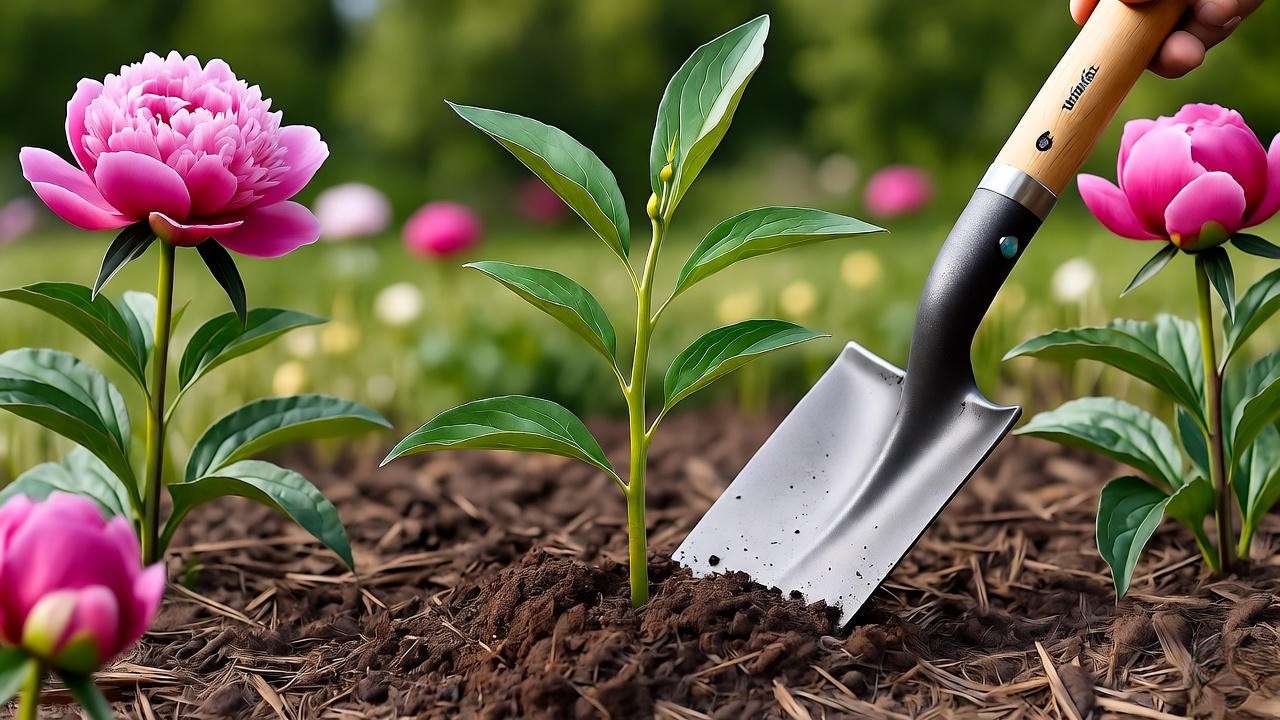
Expert Tip: “When transplanting, handle the taproot gently—it’s the lifeline of your peony. A damaged root can set growth back significantly,” advises Sarah Bloom, master gardener.
4.2 Ongoing Maintenance
Young peony plants need consistent care to thrive:
- Watering: Water deeply once a week during dry spells, ensuring the soil stays moist but not waterlogged. Reduce watering in winter when plants are dormant.
- Fertilizing: Apply a balanced fertilizer (10-10-10) in early spring as new growth appears. Avoid high-nitrogen fertilizers, which can promote leafy growth over blooms.
- Mulching: Refresh mulch annually to suppress weeds and maintain soil health. Remove mulch in spring to prevent fungal issues.
- Support: As peonies grow, their heavy blooms may need staking. Use peony rings or bamboo stakes to keep stems upright.
Common Issue: Overwatering can lead to root rot. Always check soil moisture before watering, and ensure proper drainage.
4.3 Patience Pays Off: When to Expect Blooms
Peonies grown from seed typically take 3–5 years to produce their first blooms, depending on the variety and growing conditions. Tree peonies may take even longer, sometimes up to 7 years. During this time, focus on building a strong root system and healthy foliage.
- Year 1–2: Seedlings focus on root and leaf development. Keep conditions consistent and avoid disturbing the plants.
- Year 3–4: Plants begin to resemble mature peonies, with thicker stems and more leaves. Some may produce small blooms.
- Year 5+: Expect full, vibrant blooms, especially in herbaceous varieties.
Success Story: “I planted Paeonia lactiflora seeds five years ago, and last spring, my garden exploded with pink blooms. The wait was worth every moment!” – Lisa G., home gardener.
5. Troubleshooting Common Problems When Planting Peony Seeds 🐞
Even with the best care, peony seeds and seedlings can face challenges. Here’s how to identify and solve common issues to keep your plants on track.
5.1 Why Aren’t My Seeds Germinating?
If your peony seeds aren’t sprouting, consider these culprits:
- Improper Stratification: Skipping or shortening warm or cold stratification can prevent germination. Double-check your process and ensure seeds experience 2–3 months of warmth followed by 3 months of cold.
- Poor Seed Quality: Old or improperly stored seeds may not be viable. Always source fresh seeds from reputable suppliers or harvest them correctly from your plants.
- Incorrect Conditions: Too much moisture or improper temperatures can halt germination. Maintain consistent moisture and monitor temperatures with a soil thermometer.
Solution: Restart the stratification process with fresh seeds if necessary, and use a controlled environment (like a refrigerator) for cold stratification to ensure consistency.
5.2 Dealing with Weak or Leggy Seedlings
Weak or leggy seedlings are often caused by:
- Insufficient Light: Seedlings stretching for light become leggy. Ensure 6–8 hours of indirect sunlight or use a grow light set 6 inches above the plants.
- Overcrowding: Too many seedlings in one tray can compete for resources. Thin seedlings to 2–3 inches apart.
- Nutrient Deficiency: Poor soil can stunt growth. Add a diluted liquid fertilizer (5-10-5) every 2 weeks during the growing season.
Fix: Move seedlings to a brighter location, thin overcrowded trays, and supplement with a balanced fertilizer to encourage strong growth.
5.3 Preventing Pests and Diseases
Peony seedlings are vulnerable to pests and diseases, but proactive care can keep them healthy:
- Pests: Aphids and slugs are common threats. Use neem oil for aphids and scatter crushed eggshells or diatomaceous earth around plants to deter slugs.
- Diseases: Fungal issues like botrytis blight or damping-off can affect seedlings. Ensure good air circulation, avoid overwatering, and remove any affected plant material promptly.
- Organic Control: Spray seedlings with a mix of 1 tsp baking soda, 1 tsp dish soap, and 1 gallon of water to prevent fungal growth.
Pro Tip: “Regularly inspect your seedlings for early signs of trouble. Catching pests or diseases early makes all the difference,” says Dr. Emily Rose.
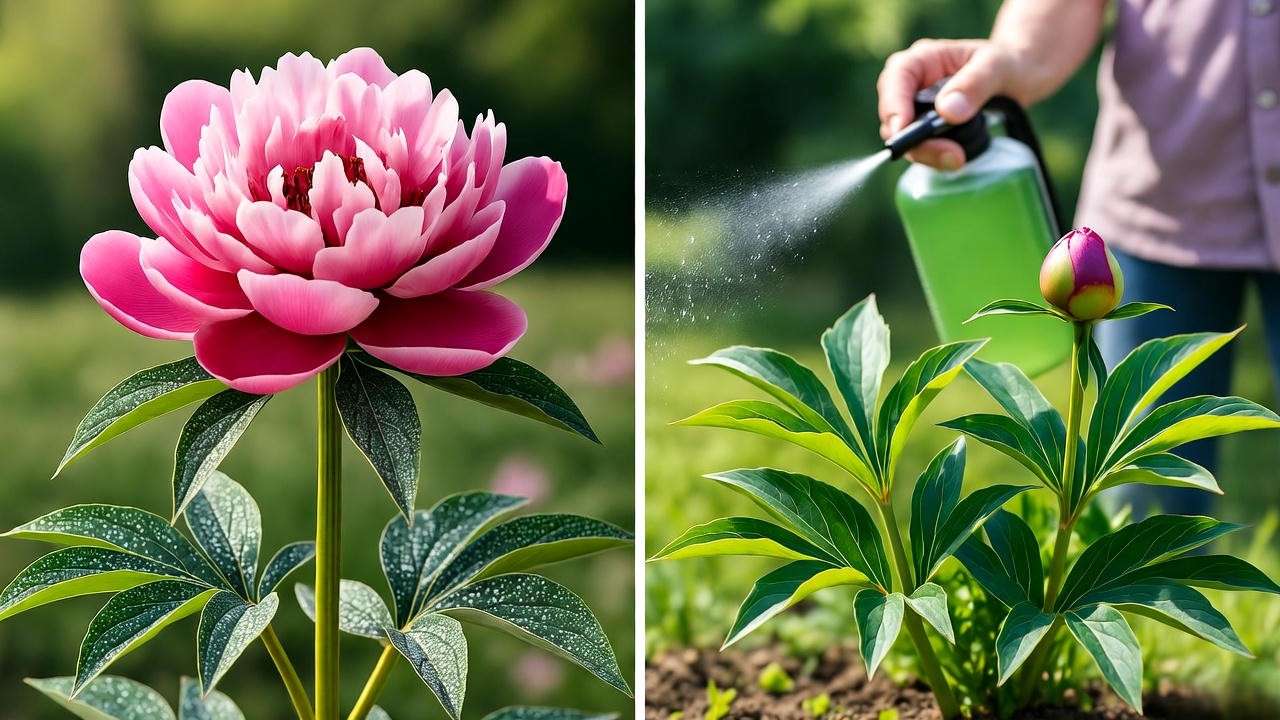
6. Expert Tips for Stunning Peony Blooms 🌺
Take your peony game to the next level with these insider tips from horticultural experts:
- Companion Planting: Pair peonies with low-growing plants like lavender or catmint to enhance your garden’s aesthetic and deter pests. Avoid planting near trees or shrubs that compete for nutrients.
- Hybridizing Your Own Peonies: Experiment with cross-pollination by hand-pollinating flowers from different peony varieties. This can yield unique blooms, though it requires patience and record-keeping.
- Soil Health: Add a layer of compost annually to enrich the soil. Healthy soil leads to larger, more vibrant blooms.
- Deadheading: Remove spent blooms to redirect energy to root development, especially in young plants.
Expert Insight: “Peonies reward gardeners who invest in their soil. A little compost goes a long way toward show-stopping flowers!” – Sarah Bloom.
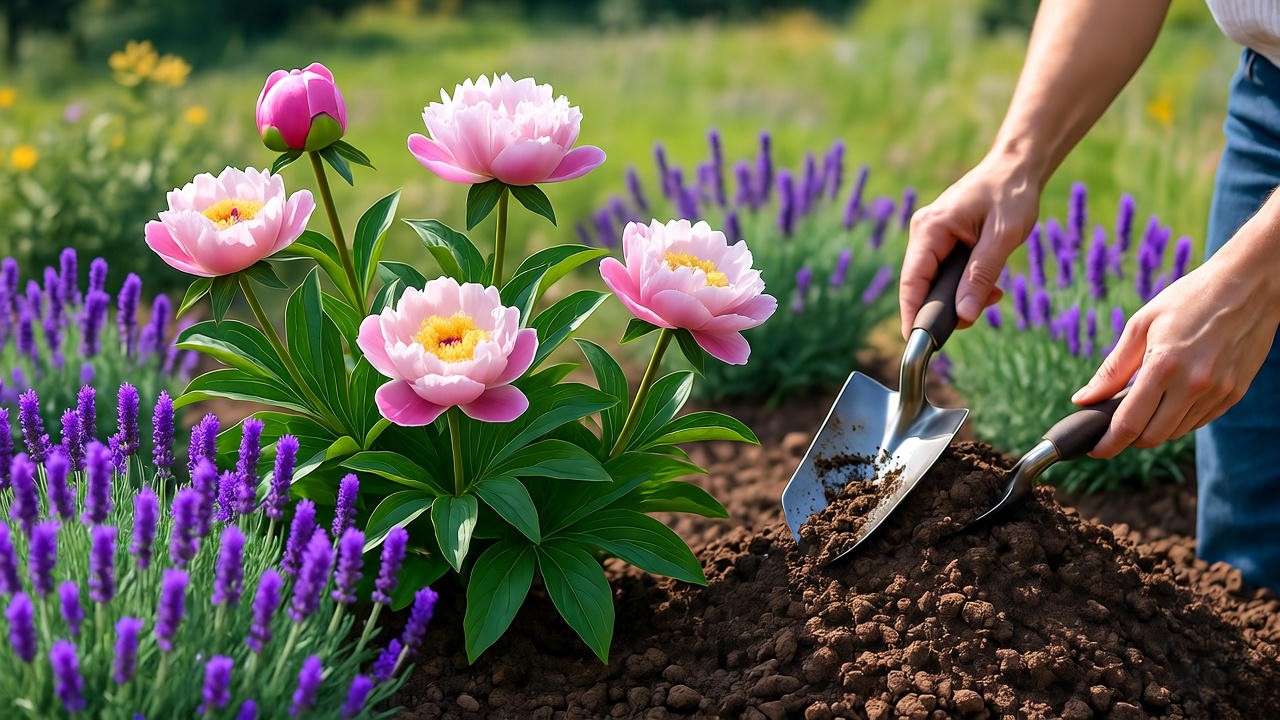
7. FAQs About Planting Peony Seeds ❓
Here are answers to common questions to help you succeed:
- How long does it take for peony seeds to germinate?
Germination can take 6–12 months due to double dormancy. Proper stratification is essential. - Can I plant peony seeds directly in the garden?
Yes, in fall, if you live in a suitable climate (USDA zones 3–8). Ensure the soil is well-prepared and protected from extreme weather. - Why are my peony seedlings not growing?
Check for insufficient light, poor soil, or overwatering. Adjust conditions and consider a soil test. - Are peony seeds worth the effort compared to buying plants?
Seeds are cost-effective and allow for unique varieties, but they require more time and effort than buying established plants. - How do I store peony seeds if I’m not ready to plant?
Store seeds in a cool, dry place (40–50°F) in a sealed container with silica gel to maintain viability.
8. Conclusion: Your Journey to Peony Perfection 🌸
Planting peony seeds is a labor of love that rewards you with stunning, one-of-a-kind blooms that can grace your garden for decades. By following this step-by-step guide, you’re equipped to overcome the challenges of double dormancy, nurture healthy seedlings, and create a vibrant peony display. Whether you’re a novice gardener or a seasoned pro, the journey from seed to bloom is a testament to patience and care. Start today, and share your peony-growing adventures in the comments below! Ready to begin? Check out our recommended seed suppliers at Peony’s Envy or Song Sparrow Farms to get started. 🌷

